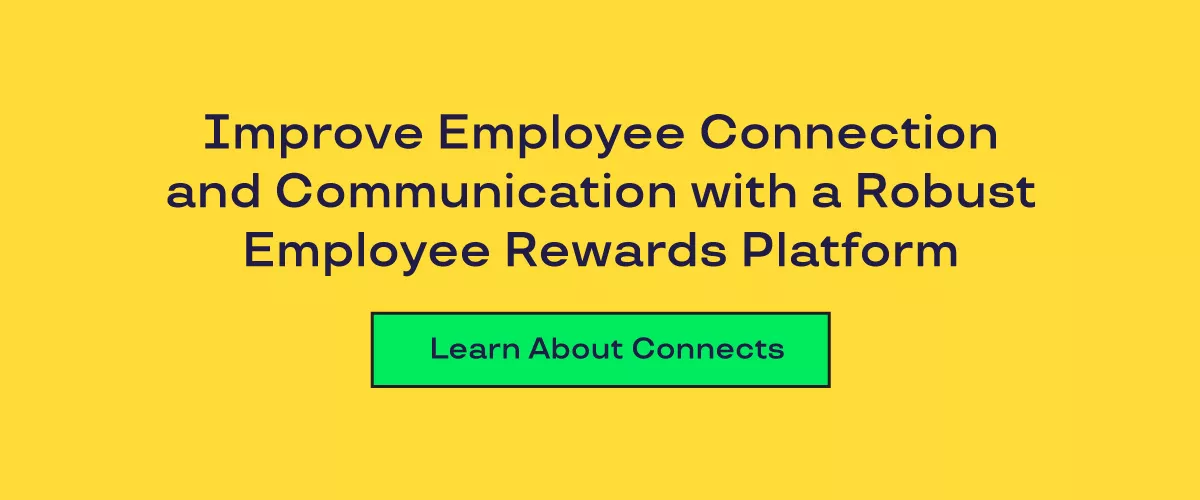
The Impact of Effective Communication of Incentives on Employee Motivation
January 25, 2024
Why do human beings—and, in this case, employees—do the things they do? They do things because they’re motivated to do so.
In some cases that motivation is internal—they may simply absolutely love the work they do. In many cases, though, that motivation is external and related to various types of rewards and incentives that drive them to perform and excel in their jobs.
It may seem obvious, but communication is critical to ensure that incentives do their job. After all, if employees aren’t aware of the incentives available to them—or how they can achieve those incentives—the value of the incentives won’t be realized. Here we take a look at the impact of effective communication of incentives on employee motivation.
Understanding Employee Motivation and Incentives
Human motivation has been studied for centuries with some well-known theories of motivation still relevant in understanding how, and why, employees are motivated. Two well-known theories of motivation are Maslow’s Hierarchy of Needs and Herzberg’s Two-Factor Theory.
Maslow’s Hierarchy of Needs suggests that employees move through a hierarchy, or stages, of addressing or achieving their needs—from basic needs like food, water, and shelter, to higher-level needs like self-esteem and self-actualization. Self-esteem needs can be impacted by employers through recognition.
Herzberg’s Two-Factor Theory is similar to Maslow’s Hierarchy in that it suggests that there are lower-level, or hygiene factors, which must be present to drive satisfaction. These hygiene factors are extrinsic—like pay, workplace policies and relationships with other employees. Motivation factors are intrinsic and include factors like achievement, recognition, and advancement.
When employees’ needs are met it leads to job satisfaction and enhanced employee performance.
The Importance of Clear Communication of Incentives
As we’ve already suggested, for incentives to have an impact they must be clearly communicated. They must also be communicated within a climate of trust. Transparent communication ensures that employees understand the organization’s expectations and goals and that they trust the organization—and their managers and direct supervisors—to support them in the achievement of those goals. It also means that employees feel free to share their thoughts and feelings freely without fear of repercussion.
Once a climate of trust and transparency has been established it’s important to ensure that there is no ambiguity in the incentive programs that exist and how they are applied, and the avoid the potential for misinterpretation.
Strategies for Effective Communication of Incentives
Communication can be challenging in many organizations. The larger they are and the more levels of management they have, the greater the potential for misunderstand and failed communication. In addition, in an environment where remote and hybrid work is on the rise, new challenges emerge. It’s important to follow some key strategies to ensure effective communication of incentive information. Here are some suggestions:
- Use multiple channels for communication. One channel is not enough. Not all employees prefer all channels, for instance. Using multiple channels can help ensure that your messages hit home. For instance: meetings, emails, newsletters, online groups and forums, etc.
- Tailor messages to resonate with diverse employee demographics. Different types of employees will be moved and motivated by different forms of communication and messages. For instance, new employees have different needs and interests than employees who are nearing retirement. Employees in front-line roles have different needs and interests than employees in senior-leadership positions. One-size-fits-all does not work for effectively communicating incentives.
- Incorporate storytelling and real-life examples. We all love a good story. Stories can help to convey information in an impactful way that employees can relate to. For instance, instead of spelling out the details of how an incentive works, give an example of how a team successfully achieved the incentive in the past, along with tips and personal reflections from team members. Real-life examples help employees related to the information and can have a greater impact on both understanding and retention.
- Enlist leadership in your communication efforts. Leaders play an important role in helping to communicate and support the importance of incentives and how those incentives are tied to individual and organizational success. Their support is important.
There are a number of ways communication can be used to help build support and awareness for incentives and ensure that employees understand how their actions can help them earn incentives to recognize their contributions.
There are also, though, some obstacles to be aware of to ensure that your incentive communication has maximum impact.
Overcoming Obstacles When Communicating Incentives
When employees understand and value the incentives they have available to them, and believe those incentives are applied fairly and consistently, their satisfaction and engagement will climb, leading to loyalty, job commitment, and retention.
But when they don’t understand their incentives or feel they’re based more on favoritism than performance, their satisfaction and its related impacts will take a dive. Here are some important obstacles to avoid to ensure that your incentive communication is on the right track.
Address Resistance or Skepticism Head On
There can be a tendency to avoid or put off the need to address negative impact or sentiment around any topic, including incentives. But that’s a dangerous sentiment. Instead, whenever you send resistance or skepticism, tackle it head on with transparent, honest, and up-front communication. These efforts will make a difference. Even if employees don’t like some aspect of your incentive program, if they understand the why behind it and trust you to be transparent with them, you’ll maintain their engagement and commitment.
Overcome Communication Barriers in Diverse Work Environments or Remote Settings
Communication in a remote setting isn’t the same, and shouldn’t be treated the same way, as in physical work settings. In the same way, communication in office settings will, and should be, different than communication in retail or manufacturing settings. Pay attention to the unique work environments where your employees are and adjustment your communication practices accordingly.
Develop Strategies for Handling Sensitive or Confidential Incentive-Related Information
Despite an environment where pay transparency regulations are increasingly common, there are some aspects of compensation—and incentives—that should remain confidential. Make sure you understand and address any sensitivities that may exist in your organization to help minimize any dissatisfaction or resentment among employees.
Recognizing and taking steps to head off the impact of obstacles that could negatively impact your incentive communications can help you support a program that will resonate with employees and help to engage them in achieving the goals of your organization.
As we’ve seen it’s not enough to simply have incentives in place. It’s important to communicate regularly and strategically about those incentives to ensure employee understanding—and to avoid misunderstanding.
Transparent and strategic communication can ensure sustained employee motivation which can drive a myriad of other business benefits.
Designing and implementing effective employee incentive programs can be challenging, especially in very large or remote/hybrid work environments. Technology can help to both simply incentive administration, and communication. Connects Celebrates, for instance, is a great tool to help companies acknowledge the people who power their businesses.





